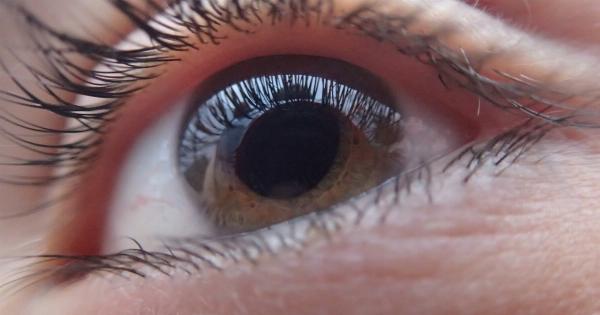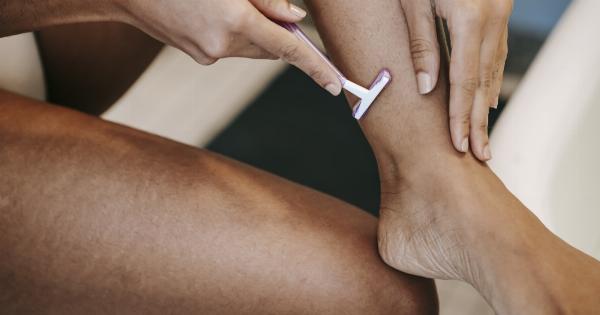Stretch marks are a common skin concern that many people experience at some point in their lives. They often occur due to rapid weight gain or loss, pregnancy, puberty, or certain medical conditions.
Initially, stretch marks appear as red or purple streaks on the skin, but over time, they may fade and turn white or silver. White stretch marks can be more challenging to treat because they indicate that the damage to the skin has already occurred. However, there are various options available that can help minimize the appearance of white stretch marks.
1. Topical Treatments for White Stretch Marks
There are numerous creams and lotions marketed as stretch mark treatments. Many of these products contain ingredients such as retinoids, hyaluronic acid, collagen, or vitamin E.
While these creams may not completely eliminate white stretch marks, they can help improve the overall appearance of the skin by making it more moisturized, smoother, and suppler. Regularly applying these treatments to the affected areas may help fade white stretch marks over time.
2. Laser Therapy for White Stretch Marks
Laser therapy is a popular option for treating various skin imperfections, including white stretch marks. During the procedure, a laser is directed at the affected skin area, stimulating the production of collagen and elastin.
This helps to repair and regenerate the damaged skin, reducing the appearance of stretch marks. Laser therapy can be an effective treatment for white stretch marks, but multiple sessions may be required to achieve the desired results.
3. Microdermabrasion for White Stretch Marks
Microdermabrasion is a non-invasive exfoliation procedure that uses tiny crystals or a diamond-tipped wand to remove the top layer of dead skin cells. This treatment can help improve the texture and appearance of the skin, including white stretch marks.
By removing the outer layer of the skin, microdermabrasion promotes the growth of new skin cells, leading to a smoother and more even skin tone. However, it is important to note that microdermabrasion may not completely eliminate white stretch marks, but it can help reduce their visibility.
4. Chemical Peels for White Stretch Marks
Chemical peels involve the application of a chemical solution to the skin, which causes it to exfoliate and eventually peel off. This process helps to rejuvenate the skin and lessen the appearance of white stretch marks.
Chemical peels can be performed at different depths, depending on the severity of the stretch marks. Superficial peels are milder and require minimal downtime, while deeper peels may lead to more significant improvements but require a longer recovery period.
Consulting with a dermatologist can help determine the most suitable type of chemical peel for treating white stretch marks.
5. Microneedling for White Stretch Marks
Microneedling, also known as collagen induction therapy, involves puncturing the skin with tiny needles to create micro-injuries. This process triggers the body’s natural healing response, stimulating the production of collagen and elastin.
By increasing collagen levels, microneedling can help improve the appearance of white stretch marks. The treatment may require multiple sessions, and results are typically seen after a series of treatments. Microneedling is considered a safe and effective option for reducing the visibility of white stretch marks.
6. Cosmetic Camouflage for White Stretch Marks
Cosmetic camouflage involves using makeup or self-tanners to conceal the appearance of white stretch marks.
While this method does not provide a permanent solution, it can be a quick and cost-effective way to hide stretch marks for special occasions or when wearing revealing clothing. Various makeup products are specifically designed to cover stretch marks, providing a temporary solution for those looking to minimize their visibility.
7. Time and Self-Care
While it may not be the ideal solution for everyone, time can play a significant role in reducing the appearance of white stretch marks. Over time, white stretch marks may naturally fade and become less noticeable.
Additionally, taking care of the skin by keeping it well-moisturized, staying hydrated, and following a healthy lifestyle can contribute to better skin health and potentially improve the appearance of white stretch marks.
8. Surgical Options for White Stretch Marks
In some cases, surgical procedures may be an option to treat white stretch marks. These procedures typically involve the removal of the affected skin through techniques like a tummy tuck or thigh lift.
However, it is essential to note that surgical options are more invasive and carry certain risks and potential complications. They are generally considered more suitable for individuals seeking a more significant transformation rather than solely targeting stretch marks.
9. Prevention of Stretch Marks
Preventing stretch marks in the first place is often easier than treating them. While it may not be possible to completely eliminate the risk, certain measures can be taken to reduce the likelihood of developing stretch marks.
These include maintaining a healthy weight, staying hydrated, avoiding rapid weight gain or loss, and using moisturizers or oils specifically formulated for stretch mark prevention during times when the skin is more prone to stretching.
10. Conclusion
Although it may be challenging to completely get rid of white stretch marks, various treatments and self-care measures can help minimize their appearance.
Topical treatments, laser therapy, microdermabrasion, chemical peels, microneedling, and cosmetic camouflage are all viable options to consider. Additionally, allowing time for the stretch marks to fade and taking steps to prevent new ones from forming can contribute to improved skin health.
Consultation with a dermatologist or skincare professional can help determine the most appropriate course of action based on individual needs and preferences.































